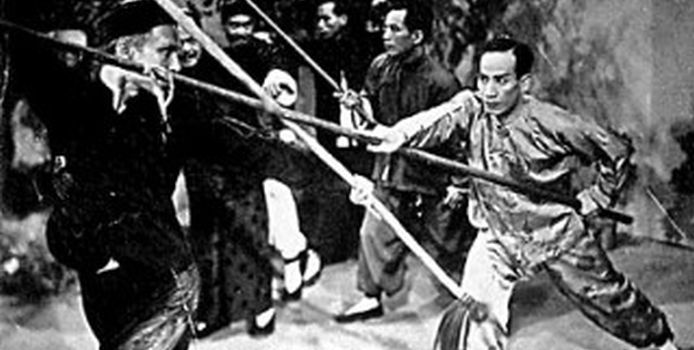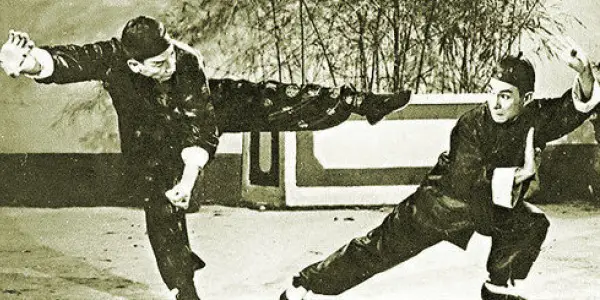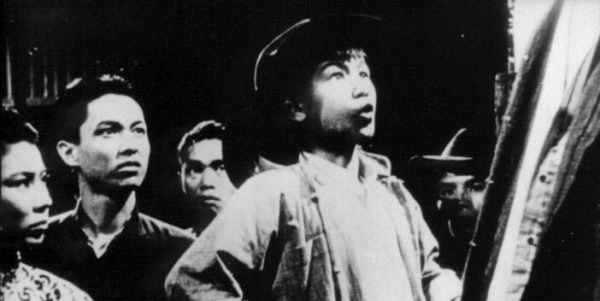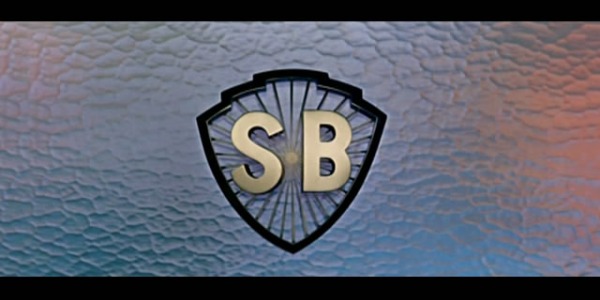The History of Hong Kong Action Cinema Pt. 3 – 1940-1950: The First Hero of Kung-Fu Movies

Massive film lover. Whether it's classic, contemporary, foreign, domestic, art,…
One question that I am always trying to answer throughout this series is “what makes Hong Kong cinema so distinctive and great?”. Well, this stage of Hong Kong’s cultural evolution is vital concerning the film business and its multifaceted ability to make highly entertaining movies. Although the forties would be a stalemate regarding the amount of movies to come from Hong Kong, the postwar climate of the fifties would lead to some major innovations.
The Japanese occupation brought film production to a grinding halt, aside from a historical drama Sorrows in the Forbidden City in 1948, one film was made during the Japanese occupation: The Battle of Hong Kong.
And as you can probably imagine, The Battle of Hong Kong is an unflattering Japanese anti-British propaganda film with few Chinese cast members and is now another in a long line of lost films. Given the brutality of the Japanese occupation, it’s fair to assume The Battle of Hong Kong (aside from a historical curiosity) is not missed.
The Hero of Hong Kong: Wong Fei-Hung
The wounds inflicted from the occupation and the Chinese civil war left a nation that could use a hero. What better hero than the most popular figures in Chinese folk history? That figure would be played by Kwan Tak-hing, and his portrayal of Wong Fei-hung would make him one of the greatest icons of martial arts cinema. Furthermore, his first film as Wong Fei-hung, The True Story of Wong Fei-Hung: Whip Extinguishes Candle in 1949 is regarded as one of the first kung-fu/martial art films. His embodiment of the classic character was so successful Kwan Tak-hing went on to star in seventy-seven films as Wong Fei-hung. His characterization would make him an icon in Chinese cinema.

Even though epic martial arts serials were being made since the dawn of Hong Kong cinema, they were traditionalwuxia serials, with flying warriors, and chivalrous heroes. What sets this film aside from the other martial arts serials is that Kwan Tak-hing and the director of the first film, Wu-Peng, took their vision of a martial arts hero in a more human direction. Instead of a flying, sword-wielding subject of fantasy Kwan Tak-hing played the folk hero as a venerable, upright hero. He may not possess superhuman powers, but, like the real Wong Fei-hung is an endowed master of martial arts.
Unlike the swashbuckling heroes of the silent era, Kwan Tak-hing was a proficiently trained martial artist, and his knowledge of various different, distinctly Chinese styles of fighting was featured prominently in each film. Authentic weapons, realistic (for its time) fighting styles, and the historical relevance of the titular hero created an attainable and relatable hero that resonated quite well with the postwar climate. For the ten year time span that these films were made few martial arts films could contend with its success as the main box office draw.
Kwan Tak-hing was also the first star who would step beyond his role as an actor and would choreograph the fight scenes in the movies. Later on in the series Kwan Tak-hing would collaborate with another huge star of Hong Kong action cinema, Sek Yin. He might be better known to western audiences as the villainous Mr. Han from the classic Bruce Lee film Enter the Dragon.
Considering the atrocities that occurred in China throughout the past two decades (Japanese occupation, Nanking Massacre, Civil War) the weary citizens needed a hero, and Wong Fei-hung was the embodiment of just that. These films may seem a bit “stagey” by today’s standards. However, this series ushered in a new era of martial arts films and Kwan Tak-hing is regarded as the father of Kung-fu films.
Despite the success of the new style of martial arts films that arrived in 1949 with the first in the long-running Wong Fei-hung series supernatural wuxia features were still dominant in the market. The comparison to the Wong Fei-hung movies may sound disparaging, but it is not meant to be. Wuxia films were still a presence at the time, although many of the titles are either lost or hard to locate. But the competition at the box office was was staggering considering the success of the new era of martial arts films.
The Early Rise of Bruce Lee
Although he wasn’t punching and kicking his way through droves of henchman, Bruce Lee got his acting career started with promise in the early forties. Bruce Lee made his first screen appearance in Golden Gate Girl in 1941, here you can see the kind of confidence you would expect from a young Bruce Lee in an early starring role in the 1950 film The Kid.

A Tale of Two Brothers: Shaw Brothers
Meanwhile Runde Shaw applied the family name to their studio in 1949, and adopting the familiar Warner Brothers style shield and initials. That would all change in 1957 when Runde’s brother Run Run Shaw took over the bulk of productions that the studio would enter its golden era as the mecca of martial arts and action films. The Shaw logo, superimposed over what I imagine is someones glass door is a beloved brand of quality recognized by Kung-fu fans around the world. Adopting the production method similar to that of the American Studios at that time, Run Run Shaw would go on to produce over three-hundred films from 1957 to 1983, earning him the title as “The Czar of Asian Movies”.

A New Future for Hong Kong
In the 1930’s, Hong Kong was producing anywhere from three, to six movies a year. In the forties the business grinded to a halt, and only four films were made. The post-war years brought new life into the industry, as well as ushering in a new era of new martial arts films with The True Story of Wong Fei Hung at the end of the decade. After the Nationalist-Communist war brought the mainland to bankruptcy, and many mainlanders left China to find a better future in Hong Kong. This greatly helped bridge the gap between the Cantonese and Mandarin dialects.
The 1950’s proved to be a progressive time for Hong Kong’s film industry as the level of Mandarin language films reached a new height. Mandarin, a dialect frequently associated as that of the mainland, became fully integrated into the Hong Kong movie circuit. The once great studios in Shanghai had fallen, and those employed found homes in the Hong Kong based studios. The Hong Kong studios absorbed the immigrating film talent, among them many filmmakers, studio executives and actors, which would strengthen their power as one of the major powers in the Asian film market.
In the next installment of The History of Hong Kong Action Cinema, we’ll move on to the period between the 60’s and 80’s, focusing on the reign of the Shaw Brothers and the Hong Kong New Wave. See you next week!
If you have any questions or comments, please share them below!
(top image: The True Story of Wong Fei-hung (1949) – source: Dali Film Company)
Does content like this matter to you?
Become a Member and support film journalism. Unlock access to all of Film Inquiry`s great articles. Join a community of like-minded readers who are passionate about cinema - get access to our private members Network, give back to independent filmmakers, and more.
Massive film lover. Whether it's classic, contemporary, foreign, domestic, art, or entertainment; movies of every kind have something to say. And there is something to say about every movie.













